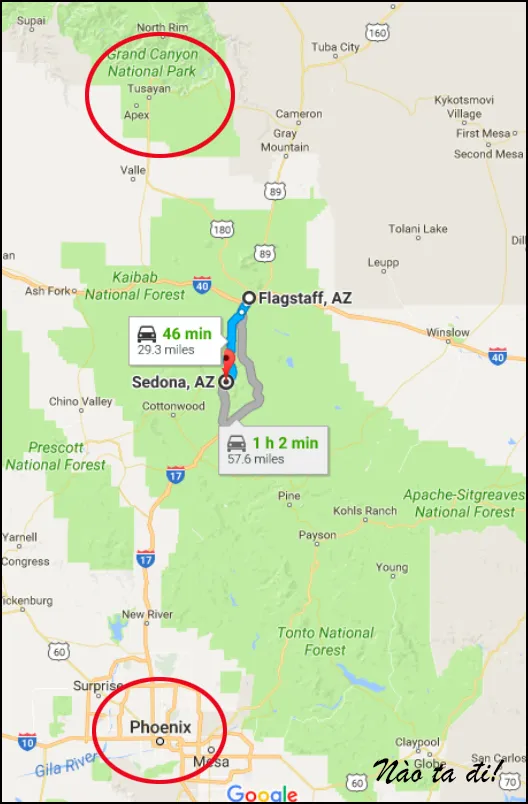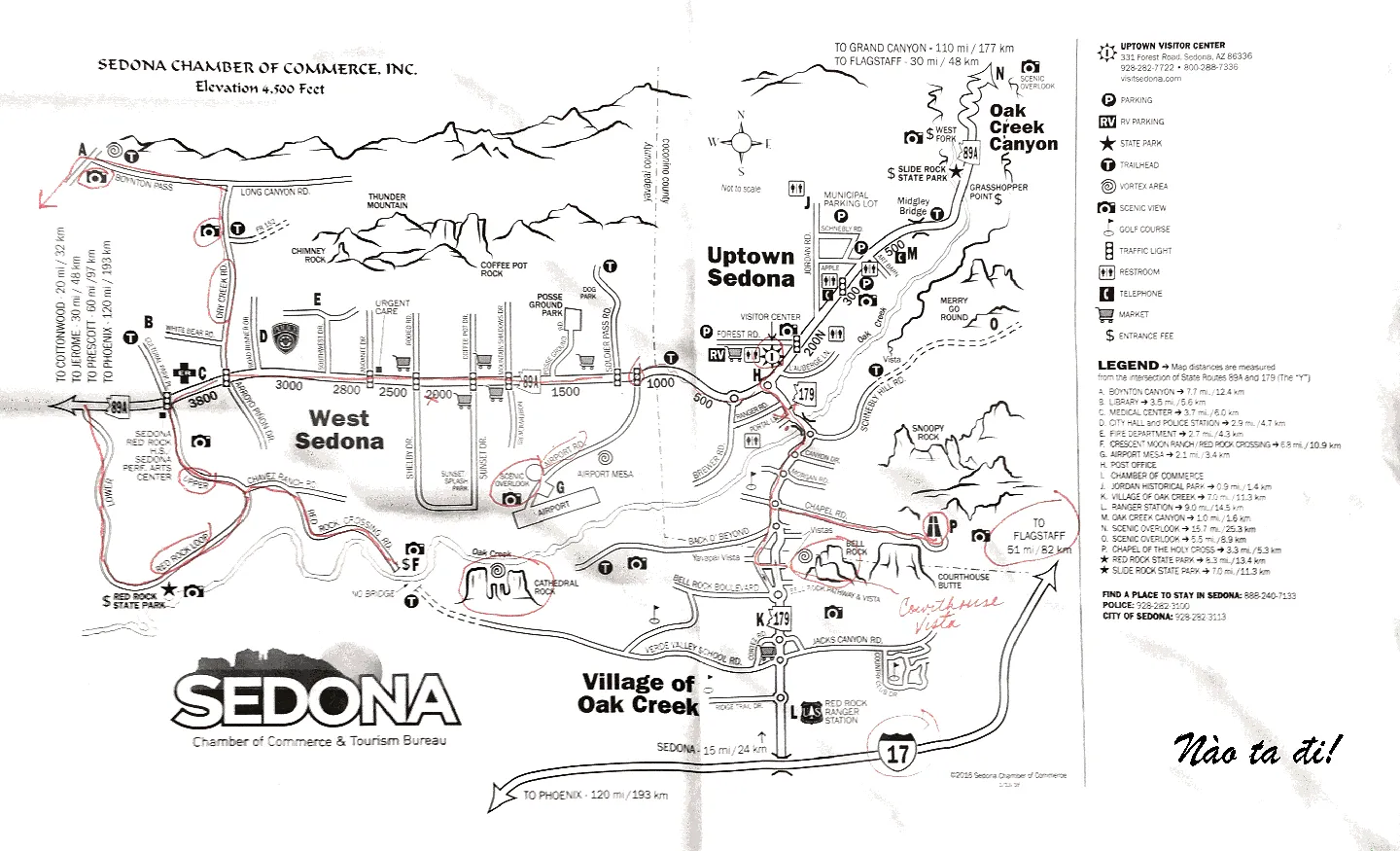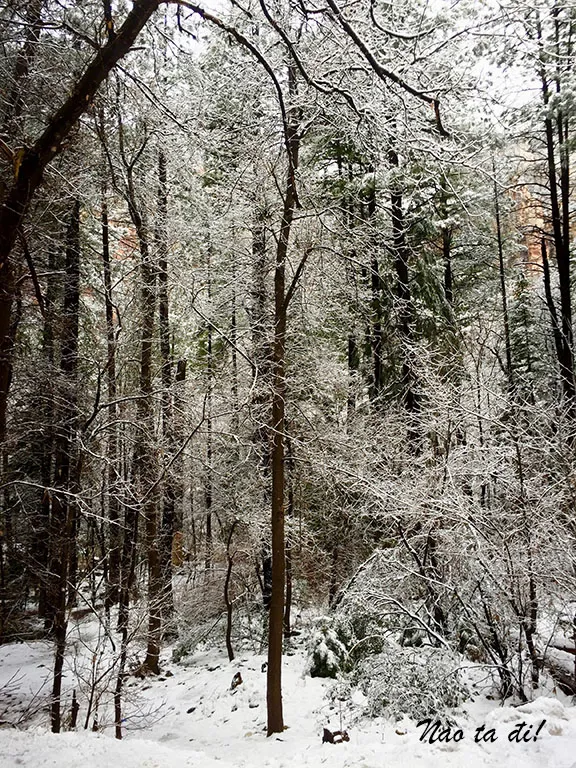Arizona, famed for the majestic Grand Canyon and enchanting Sedona, dons a completely different charm in winter. Despite the common perception of scorching deserts, Arizona is an ideal destination for those who love hiking and exploring nature in the crisp, cool air. However, winter hiking demands meticulous preparation and expertise to ensure safety. This article provides you with detailed guidance for a memorable and safe winter hiking trip in Arizona.
Arizona offers more than just warm sunshine; it boasts stunning snow-capped mountains in winter. Hiking during this season provides a unique experience, allowing you to admire the magnificent scenery of nature blanketed in pristine white snow. From the red rock mountains of Sedona to Humphreys Peak, the state’s highest summit, Arizona has countless options for those who love challenges and exploration. However, it is crucial to be thoroughly prepared with equipment, skills, and knowledge to cope with harsh weather conditions.
Choosing the Right Hiking Location
Arizona has numerous breathtaking hiking locations, but not all are suitable for winter. Here are a few suggestions:
-
Sedona: Renowned for its magnificent red rock formations, Sedona is an excellent choice for beginners or those seeking moderate-altitude hikes. Some popular trails include Devil’s Bridge Trail, Cathedral Rock Trail, and Bell Rock Trail. Remember to check weather conditions before heading out, as ice and snow can cause slippery surfaces.
Aerial view of Sedona with distinctive red rock formations
-
Flagstaff: Located at a higher elevation than Sedona, Flagstaff offers more challenging hiking experiences. Humphreys Peak, Arizona’s highest point, is a popular choice for experienced hikers. However, be prepared for harsh weather conditions and heavy snow.
-
Grand Canyon: While primarily known for rim-to-rim hiking, the Grand Canyon also has several interesting hiking trails, especially along the Rim Trail. In winter, you can admire the majestic views of the canyon covered in a light layer of snow.
Preparing Essential Equipment
Winter hiking requires specialized equipment to ensure safety and comfort. Here is a list of essential items:
- Warm Clothing: Choose layered clothing, including thermal base layers, a fleece or down jacket, waterproof hiking pants, and warm gloves and a beanie.
- Specialized Hiking Boots: Opt for boots with good traction, waterproofing, and ankle support. Wear thick socks to keep your feet warm.
- Hiking Poles: Help maintain balance and reduce pressure on your knees.
- Crampons (Traction Cleats): Necessary if you are hiking on ice or snow.
- Backpack: Choose a backpack of appropriate size to carry all essential items.
- Water and Snacks: Bring enough water and energy-rich snacks to maintain your energy throughout the hike.
- First-Aid Kit: Include bandages, antiseptic wipes, pain relievers, and other personal medical supplies.
- Compass or GPS: Helps you navigate in case you get lost.
- Headlamp: Essential if you are hiking early in the morning or late in the afternoon.
- Sunglasses and Sunscreen: Protect your eyes and skin from sun damage, even in winter.
Essential Skills and Knowledge
In addition to equipment, you also need certain skills and knowledge for safe winter hiking:
-
Navigation Skills: Know how to use a compass, GPS, and map to navigate in adverse weather conditions.
-
First Aid Skills: Know how to handle emergency situations such as sprains, dislocations, and hypothermia.
-
Weather Awareness: Monitor weather forecasts before heading out and know how to recognize warning signs of bad weather.
-
Walking on Ice and Snow Skills: Know how to use crampons and hiking poles to move safely on ice and snow.
Map showing hiking trails in Sedona
Important Notes
-
Always Hike with an Experienced Person: If you are a beginner, hike with someone experienced in winter hiking.
-
Inform Family or Friends: Let them know where you are going, when you expect to return, and carry their contact information.
-
Do Not Hike Alone: Always hike with at least two people so you can help each other in case of emergency.
-
Comply with Park Regulations: Learn and adhere to the regulations of the national or regional park where you plan to hike.
-
Do Not Take Risks: If the weather is too bad or you feel unwell, turn back.
Highway 89A from Flagstaff to Sedona with red rock mountains and pine forest scenery
Explore Local Cuisine
After a long day of hiking, treat yourself to Arizona’s culinary specialties to recharge. Some dishes you should try include:
- Sonoran hot dog: A hot dog wrapped in bacon, grilled over charcoal, and topped with pinto beans, onions, tomatoes, mayonnaise, mustard, and jalapenos.
- Chimichanga: A deep-fried burrito, typically filled with beef, chicken, or pork.
- Fry bread: A puffy fried dough, often served with honey, sugar, or stew.
Conclusion
Winter hiking in Arizona is a fantastic experience, offering a chance to discover the majestic beauty of nature in the cool, crisp air. However, it is crucial to be thoroughly prepared with equipment, skills, and knowledge to ensure safety. Hopefully, these guidelines will help you have a memorable and safe winter hiking trip in Arizona. Are you ready to conquer the snow-capped peaks of Arizona?

 Map showing hiking trails in Sedona
Map showing hiking trails in Sedona Highway 89A from Flagstaff to Sedona with red rock mountains and pine forest scenery
Highway 89A from Flagstaff to Sedona with red rock mountains and pine forest scenery